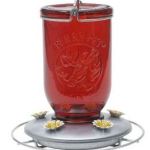Hummingbird Food Recipe: Without The Red Dye
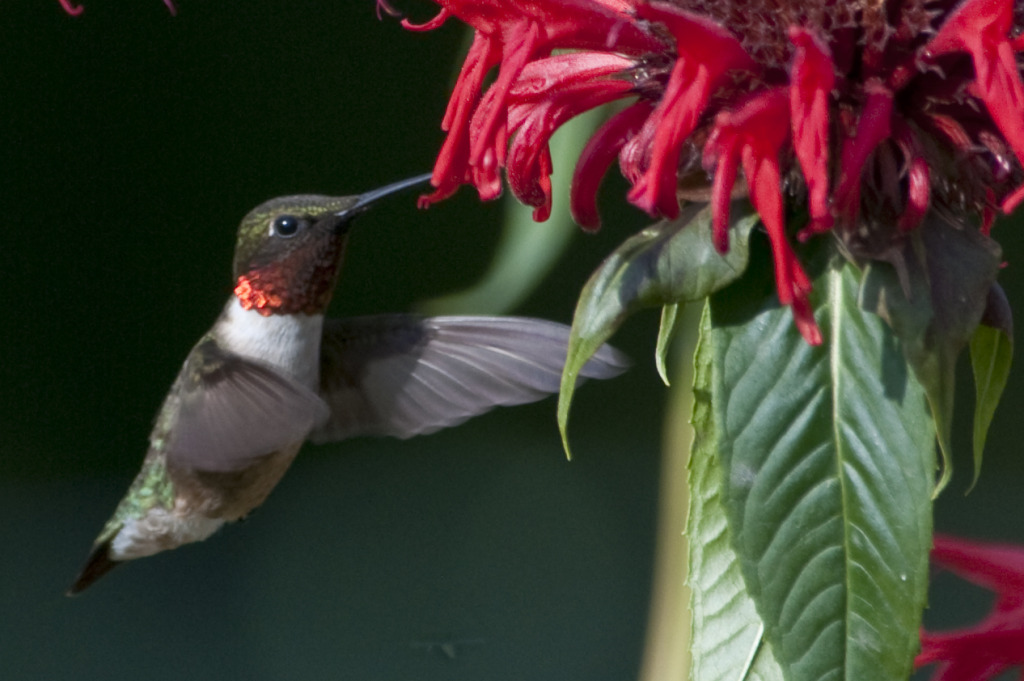
How To Prepare Hummingbird Food
Hummingbirds are one of natures miracles of flight. Here in the East our most common humming bird is the Ruby-throated hummingbird (Archilochus colubris). They are bright emerald green (the males) or a muted green (females) and are about 2-3" in size. The males have a patch of iridescent feathers on their throats for display. Amazingly Ruby-throats weigh about 2-6 g. To give you an idea of how light this is, the standard penny weighs about 2.5 g, so a hummingbird can be about 1-3 pennies in weight! Their wings beat so fast (up to 53x per second) that they make a humming sound. When they fly their wings actually make a figure 8 motion. Check out this slow motion video below.
Ruby-throats winter in Central America, anywhere from Mexico to Panama. They feed primarily on the nectar of flowers and small flying insects. They'll also lick the sap from trees, where sapsuckers have drilled holes, and of course drink sugar water.
The Ruby-throats leave their wintering grounds and follow the blooming of flowers and "nectar" migration north. This can be as early as February or (like this year) as late as April. To prepare for such a journey hummers must put on a lot of body weight, sometimes nearly doubling in mass. They are HUGE eaters, mainly because they have amazingly fast metabolisms. It's estimated that their metabolism is roughly 100x that of an elephant! They can eat up to 1.5-3x their body weight a day. Imagine being a human weighing 150 lbs and eating 1.5 x your body weight a day!
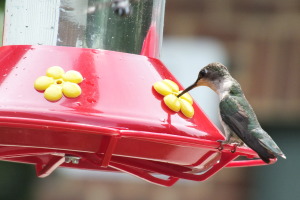
Males are the first to return in Spring, moving north with the flower bloom. Females will follow after. Their journey can take up to two weeks to go from the Mexico to the far North of the Eastern US. Some of them even cross the entire gulf of Mexico (which can take up to 18 hours of constant flying!). Many people like to feed hummingbirds to help them along their long-distance journey. Don't worry, putting up feeders won't keep them from migrating North or South, it's just providing them food to help them along. Studies have shown that their instinct to migrate is too strong to stay in one place (Winter/Summer grounds) too long.
If you want to set up a feeding station for humming birds it can be a great way to watch the birds, teach children about hummers, and even collect some citizen science data to help researchers.
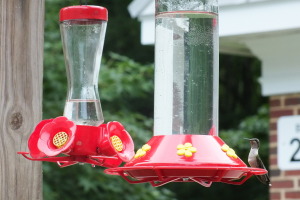
Choose a Nice Feeder
You don't have to spend a lot of money, plastic is fine, it just won't last very long. I tend to like glass ones that multiple holes (with yellow flowers/colors) and multiple perches. I also like larger ones so I don't have to fill the feeder as often. I like this style from Perky Pet for $8. You can also buy red colored glass bottles which are great too. I'm going to talk about red food coloring below, but please know that red food coloring is absolutely horrible for hummers.
To Set Up a Successful Feeding Station:
- Plant or hang red or orange flowers nearby.
- Using red tape or streamer wrapped around your feeder pole.
- Consider installing an ant moat to keep ants out of the food. You can make one very easily with a cork, bottle cap, and hook. Check out this video.
- A common bee-keeper trick to keep ants out is to also sprinkle cinnamon around the base of the pole. Ants hate cinnamon.
- Use a metal pole that is hard for predators like snakes to climb.
- Put your feeder high enough off of the ground to avoid cats and other predators. This includes keeping the feeder away from bushes where preying mantises may lurk (yes they do eat humming birds). If you don't believe me watch this video (warning, it does have some gruesomeness when the mantis gets the hummer)
If you've got your feeding station all ready then it's time to make the food.
HUMMINGBIRD FOOD RECIPE
- For a Single Batch: Rinse out your hummingbird feeder and then fill it with fresh clean water, about 2/3 full.
- You will want to mix about 1 part white refined sugar to 4 parts water, so eyeball about how much water you have. (1/4 cup of sugar to 1 cup water works nicely)
- Pour your water and sugar into a pan on the stove. Bring this to a boil for at least a minute. This kills any bacteria or mold that can hurt your little hummer. I know, it's tempting to skip this step but don't. You can end up making these tiny birds very sick if you skip it.
- Cool the water and fill the feeder.
- If you are making a double batch then you can store the water in the fridge. Just be sure to use tape and marker to label when it was made, and don't let it sit too long (not past 5-6 days).
- Clean out your feeders at least once a week, and monitor them for mold and fungus. You should always rinse them with very hot water (no artificial soap or industrial cleaners), before re-filling. If you need to, use a natural cleaner.
*Never use honey to make humming bird food. Water with honey can grow bacteria and fungus, which can be harmful to the birds.
Did you notice that this recipe has NO RED FOOD DYE! This is very important. Do not use red food dye or buy food that has red food dye.
Red dye #40, or Allura Red, is in pre-made foods or the food dye in your cabinets. This dye is not a natural coloring, it's artificial, which for an animal that weighs about the same as a penny and drinks 1-3x its body weight, this can have a serious compounding effect on the bird's body. There are conflicting reports about how serious this effect can be, ranging from malabsorption of food in the gut lining to causing other digestive issues. They do excrete some, and absorb some (If you want to see red-hummingbird poop/waste check out this interesting blog post). Regardless, it's not necessary, and not worth taking the risk. In nature nectar is clear, not colored, and birds still drink it. If you're worried about attracting the hummers try the ideas listed above.
CITIZEN SCIENCE AND HUMMING BIRDS
If you're a teacher, or just love science and nature, then you can help researchers track and monitor hummingbird migration. Journey North has great teaching tools and information, as well as free apps, real time maps to see where they're migrating right now, and much more. Check out my previous blog post to learn more.
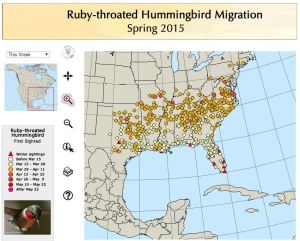
Scientists not only use citizen science data, but they also band and tag hummingbirds too. A new type of technology uses tiny micro chips strategically placed at feeding feeding stations. Check out this awesome blog article and how they use feeding stations, alligator clips, and copper hoops to weigh and monitor migrating hummers.
Hummingbirds are amazing creatures, and their sheer existence and a miracle of nature. You can enjoy them near your home, and help them on their long migration journey, simply by offering them a bit of sugar water and care.


